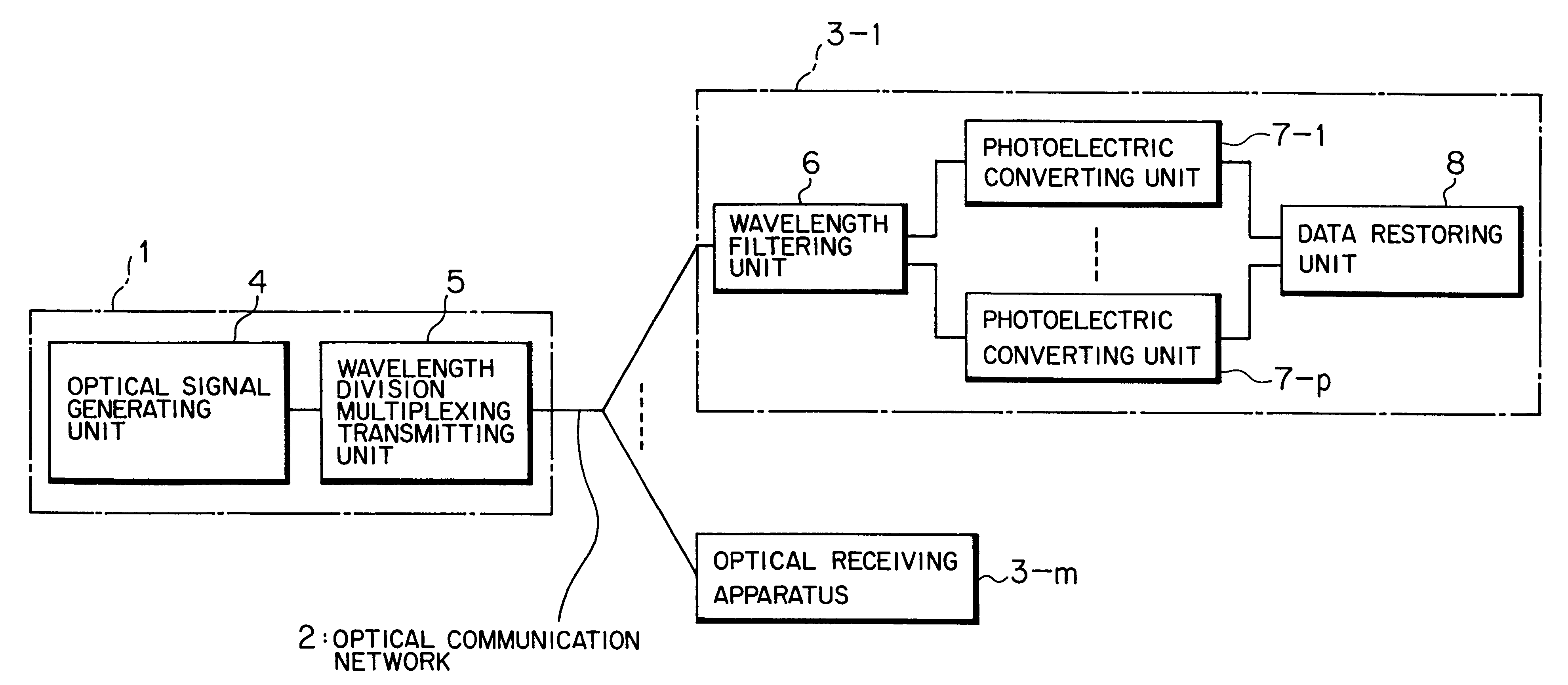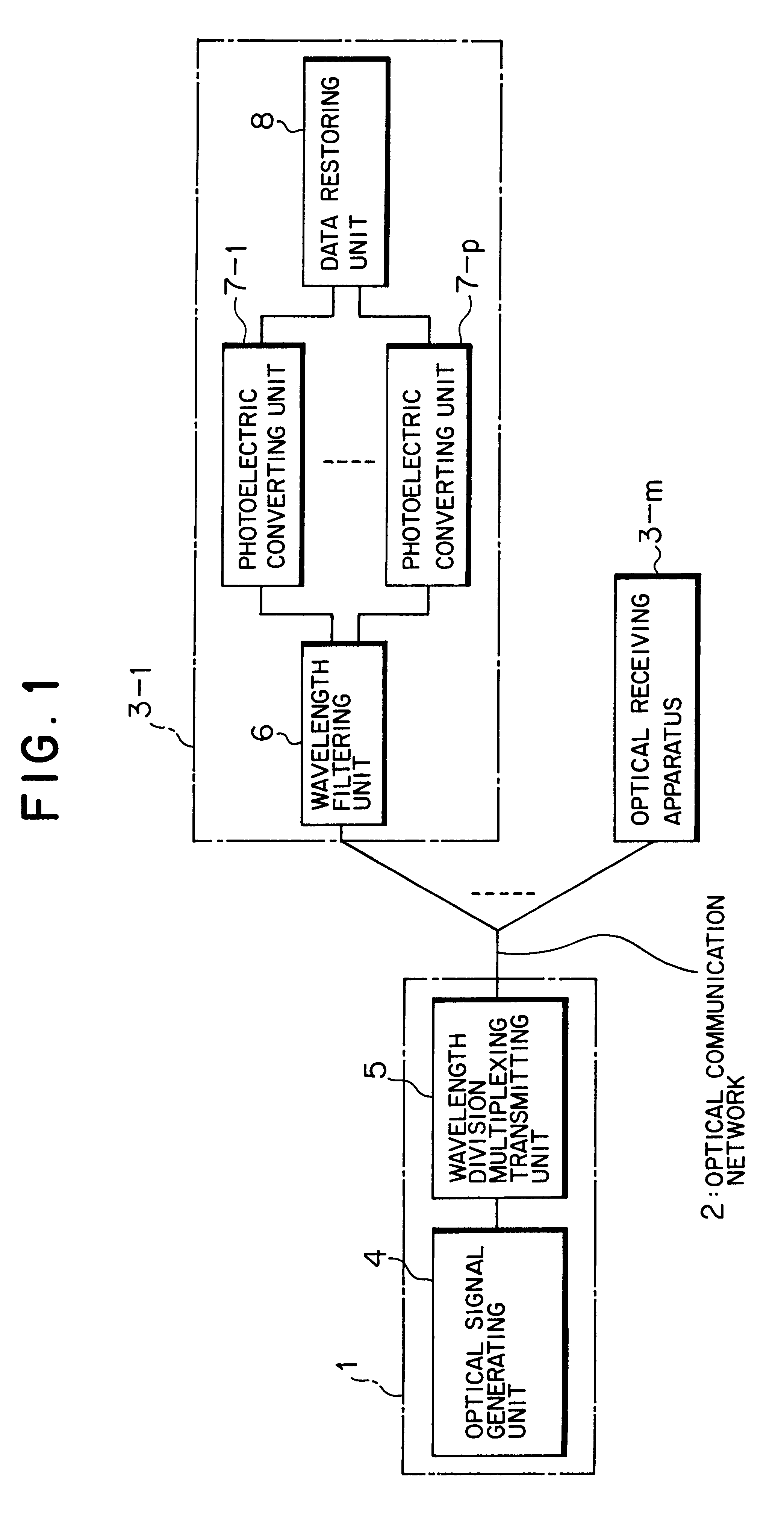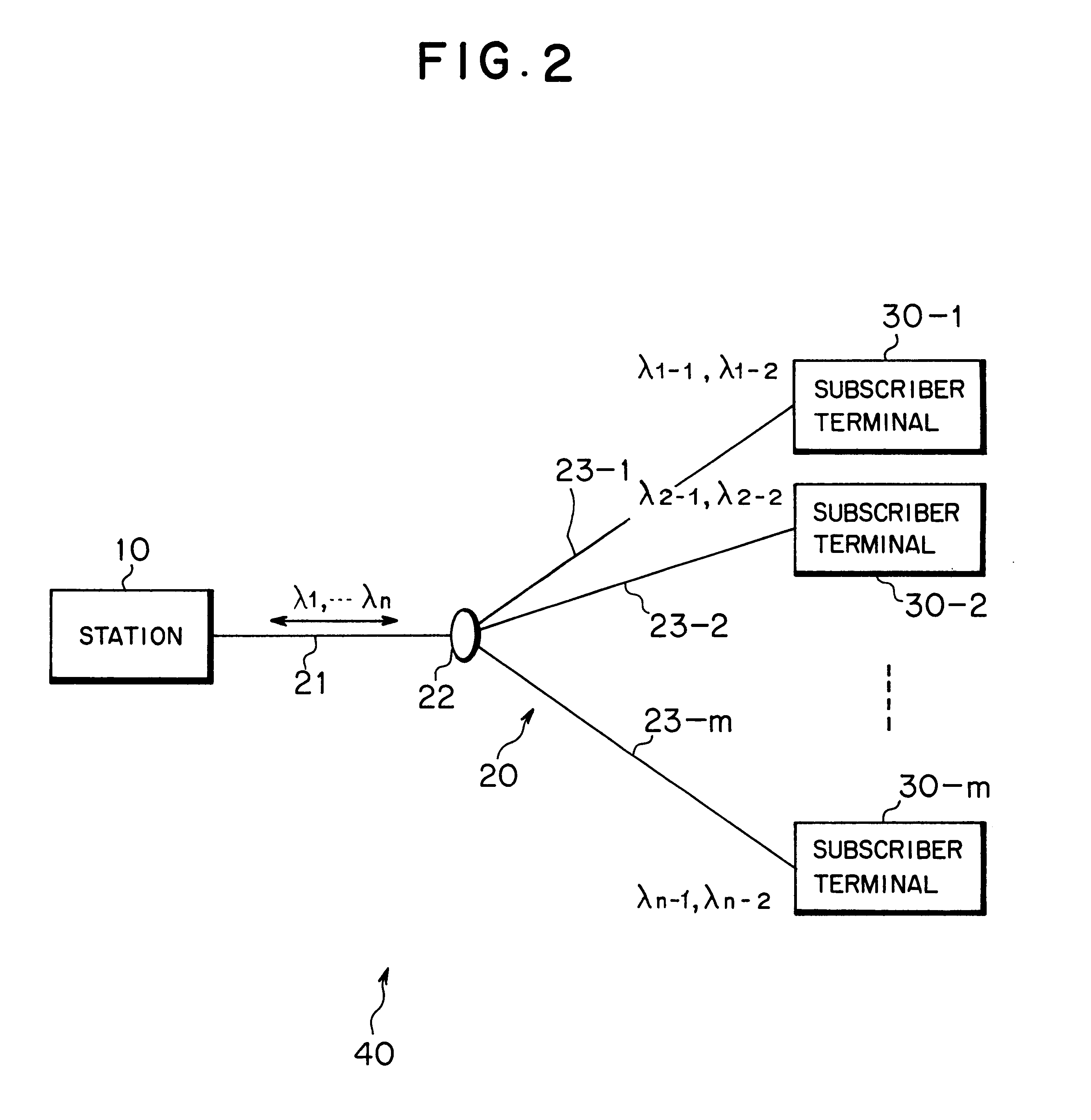Optical transmitting apparatus and optical receiving apparatus, and optical communicating method
a technology of optical communication and optical receiving, applied in the field of optical communication methods, can solve the problems of low network extensibility, limited number of subscribers to the number of wavelengths, and inability to increase the number of subscribers of the optical communication system, so as to improve the accuracy of communication, increase the extensibility of the network, and efficiently use the transmission band
- Summary
- Abstract
- Description
- Claims
- Application Information
AI Technical Summary
Benefits of technology
Problems solved by technology
Method used
Image
Examples
first embodiment
FIG. 2 is a block diagram showing an optical communicating system to which this invention is applied. In the optical communicating system 40 shown in FIG. 2, reference numeral 10 denotes a station (optical transmitting apparatus, transmitting side apparatus). The station 10 can convert transmit data, which is time division multiplexed (TDM) or in the synchronous transfer mode (STM), into wavelength division multiplexed optical signals and transmit the optical signals to the subscriber terminals (optical receiving apparatus, receiving side apparatus) 30-1 through 30-m (m; an integer not less than 2), which are a plurality of opposite apparatus as destinations over an optical communication network 20.
In the optical communication network 20, an optical fiber 21 on the side of the station 10 is connected to each of optical fibers 23-1 through 23-m on the side of the subscriber terminals via an optical coupler 22. Whereby, the station 10 can transmit an optical signal of, for example, n ...
second embodiment
(c) Description of a Second Embodiment
FIG. 17 is a block diagram showing an essential part of a station 10A according to a second embodiment of this invention. The station 10A shown in FIG. 17 is applied similarly to the station 10 in the optical communication system 40 according to the above first embodiment.
The station 10A according to the second embodiment has, differently from that (refer to reference numeral 10) according to the first embodiment, a scramble processing unit 50, instead of the cell duplicating unit 11 and the DMUXs 13-1 and 13-2, and a controlling unit 12A for controlling a process in the scramble processing unit 50. Other structure is basically the same as the first embodiment described above.
The controlling unit 12A has a table for holding destination information correspondingly to header information given by the header attaching unit 17 to control the scramble processing unit 50, the multiplexing units 14-1 through 14-n and the FIFO memory 15 so that transmit ...
third embodiment
(d) Description of a Third Embodiment
FIG. 20 is a block diagram showing a station 10B according to a third embodiment of this invention. The station 10B shown in FIG. 20 is also applied to the optical communicating system 40, similarly to the above first and second embodiments.
As compared with the above first and second embodiments (refer to reference numerals 10 and 10A), the station 10B according to the third embodiment can transmit data which does not require privacy protection as wavelength division multiplexed optical signals along with data (private data) requiring privacy protection. Other structure of the station 10B is basically the same as those according to the first and second embodiments.
The station 10B shown in FIG. 20 has a transmitting system for private data (refer to reference numerals 11, 13-1, 13-2, 14-1 through 14-n and 15) similarly to the first embodiment, besides a header attaching unit 17A, a data replicating unit 11A and an FIFO memory 15A as a data transmi...
PUM
 Login to View More
Login to View More Abstract
Description
Claims
Application Information
 Login to View More
Login to View More - R&D
- Intellectual Property
- Life Sciences
- Materials
- Tech Scout
- Unparalleled Data Quality
- Higher Quality Content
- 60% Fewer Hallucinations
Browse by: Latest US Patents, China's latest patents, Technical Efficacy Thesaurus, Application Domain, Technology Topic, Popular Technical Reports.
© 2025 PatSnap. All rights reserved.Legal|Privacy policy|Modern Slavery Act Transparency Statement|Sitemap|About US| Contact US: help@patsnap.com



